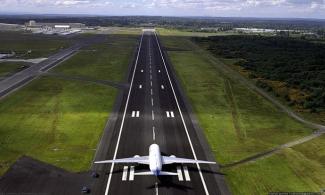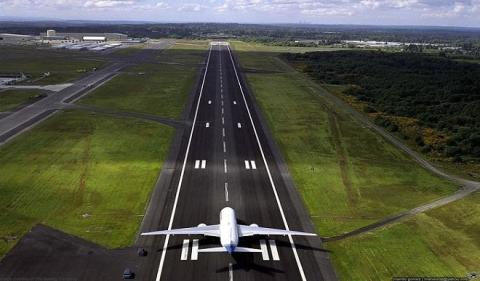
According to the Nigerian Airspace Management Agency (NAMA), the absence of spare parts to replace some of the failed components had affected the smooth running of the equipment.

Less than eight years after the Total Radar Coverage of Nigeria (TRACON), which cost the Federal Government €66.5 million was launched in Abuja, the facility is has suffered a spare-parts deficit.
According to the Nigerian Airspace Management Agency (NAMA), the absence of spare parts to replace some of the failed components had affected the smooth running of the equipment.
Speaking today at the Stakeholders Interactive Forum organised by the agency held in Lagos, Engr. Farouk Umar, Director of Safety Electronics and Engineering Services, NAMA accused the manufacturer of the equipment, Thales of France of defaulting in its agreement with the Federal Government.
He explained that replacement of spares was part of the contractual agreement the government entered into with the manufacturer, but lamented that in the past four years, which was four years after the installation of the facility, NAMA could not source for spare parts to replace failed components.
Umar, however, appealed to the Federal Government to intervene in the situation, saying that all efforts by NAMA’s management did not yield any fruitful result.
The TRACON project commenced during the time of Kema Chikwe as a Minister of Aviation in 2003, but was eventually completed in 2010 after suffering series of postponements.
The project was conceived at €66,500,870 million, which was paid by the Federal Government.
He further emphasised that the facility was due for upgrade to multilateration as embraced by other major aviation countries around the world.
“There is a challenge with the TRACON and the truth is no matter how good an engineer is, without spares it is almost impossible to get it anything done. This is two years and we have been dragging with the manufacturers, Thales of France, to be helpful and friendly. We have been managing the assets without spares since 2014.
“The equipment is due for an upgrade, and so we are appealing to the Minister of Aviation to talk to the manufacturers. Our greatest challenge is power and power is a national issue, but we have had to think outside the box.
“Adequate and steady power is critical for the efficient functioning of the equipment and so we deployed solar energy to power the navigational facilities for a start. We have powered 18 navigational sites with solar energy. After that we are looking forward to power communication facilities with same.”
In his address, Capt. Fola Akinkuotu, Managing Director, NAMA, called on the agency’s customers, domestic and foreign airlines, as well as airports to meet their obligations, noting that it was not in his character to wield the big stick.
According to him, in the bid to enhance air safety and radio communication between pilots and control towers within the country's airspace, NAMA has installed Very High Frequency (VHF) radios across 17 airports in Nigeria.
Some of the airports equipped with the facility included Owerri, Enugu, Kaduna, Ibadan, Katsina, Sokoto, Maiduguri and Akure.
Others are Asaba, Dutse, Akwa Ibom, Bauchi, Gombe and Calabar airports.
Akinkuotu said the installation of VHF radios in 17 airports for approach and aerodrome control was part of the short-term approach of the current management in the agency.
He insisted that installation of the equipment would further address the radio communication challenge in the system and urged all users of its facilities to commit to their obligations regularly in order to improve safety in the airspace.